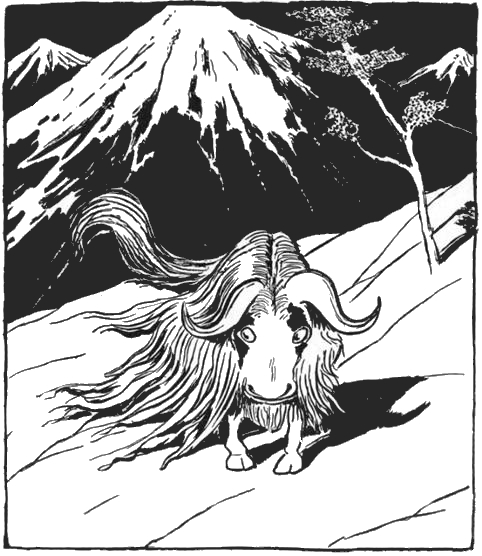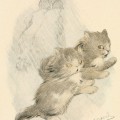Their numbers are declining in the wild but their domesticated cousins are doing well. Bos Mutus, the wild yaks are the largest native animal living in their native habitats – alpine meadows. These bovids literally live at the top of the world in the Himalayas, the Tibetan Plateau, Mongolia and northern Russia.
Yaks can thrive in the higher elevations with their increased ability to transport oxygen through their blood, fat reserves and virtually having no sweat glands. However, they are at risk for heat exhaustion at temperatures as low as 59 degrees Fahrenheit. The sweat glands the yaks do have do not function like ours do. Their glands produce a sticky sweat that works to keep their thick fur matted which helps to keep them warm in the extreme conditions they call home.
Oliver Herford (1863-1935) once again makes a large, ungainly animal seem almost cute. This yak drawing from A Child’s Primer of Natural History (1899) has a bit of an Oriental feel with Herford’s tree and the snow capped mountains in the landscape behind the yak. This yak is alone, they usually live in herds. He has a somewhat concerned or even frightened expression on his face – perhaps he realizes that the rest of the herd has moved on without him.
I do hope someone can give this poor yak a home in a creative work and make him happy again.

This image is copyright free and in the public domain anywhere that extends copyrights 70 years after death or at least 120 years after publication when the original illustrator is unknown.




